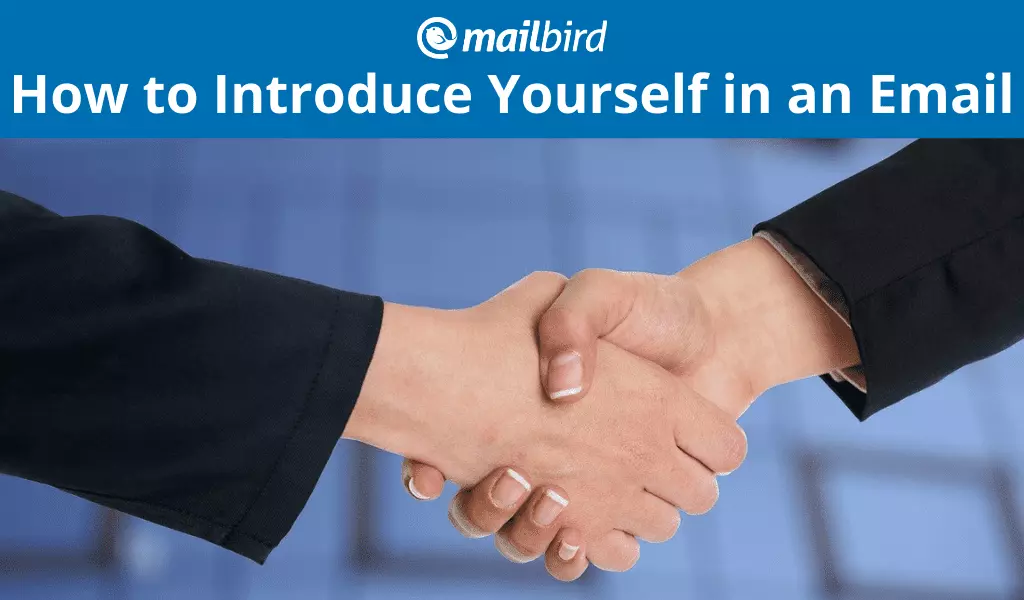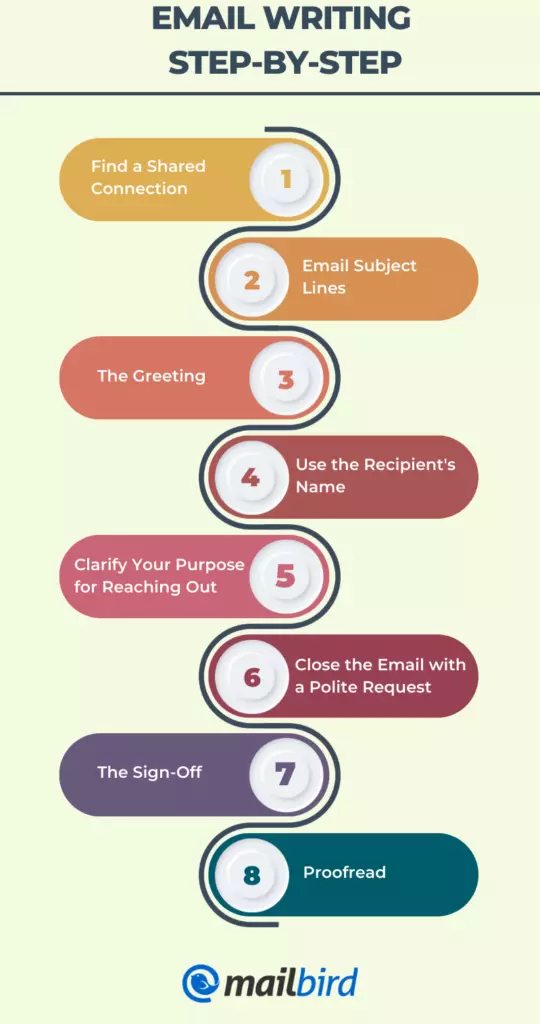Write Introduction Email Like a Pro: Ultimate Guide

As millennials, we thrive on emails. We live our daily lives around our virtual inboxes, and we experience most joyous news or harrowing announcements via email. As Adestra's study indicates, 73% of millennials showed a preference towards communication via email, with 44% of us staying glued to our smartphones to check these messages upon waking up. As a millennial yourself, you probably use your email for all major communication, but do you know how to introduce yourself in an email?
We've all gotten that email that made us feel a twinge of sympathy for the sender.
|
Subject: Hello! Hi, I'd like to talk about the position. Jane |
Did Jane do something wrong in her introduction email? She included a greeting, she listed her reason for sending the email, and she ended with her signature. On the surface, it seems that she did everything right, but for those of us who hail from the days of Emily Post, we know there is far more to email etiquette than a singular sentence.
What is a self-introduction email?
When it comes to making a first impression via email, a self-introduction message can play a crucial role. It allows you to introduce yourself to someone who doesn't know you yet, whether it's for a job opportunity, seeking advice, or pitching a product or service.
While a self-introduction email is not a replacement for writing a cover letter or resume, it can set the tone for future communication. The key to crafting an effective self-introduction email is to capture the recipient's attention and generate their interest in what you have to offer.
Improve Your Email Writing Step-by-Step

Let's break down the email above and go through the steps of improving it.
1. Find a Shared Connection
Before reaching out to someone in an email, it is beneficial to assess whether you have any common connections with the recipient. If you are aware of a mutual acquaintance who works at the same organization or who attended the same educational institution, consider inquiring if they would be willing to facilitate an introduction or permit you to mention their name in your email. This can help establish credibility and increase the likelihood of your email being received positively.
2. Email Subject Lines
What makes you care enough to click on an article or open up an email that lands in your inbox? The subject line, of course.
For an introductory email that gets the attention of your desired recipient, you need to write a proper, professional subject line. If you want to formally introduce yourself via email, you don't have to say that in the subject line.
While you could say, "Hi, I'm Jane," in your subject line (but please don't do that), why not give a hint into the content of your email? Try something like "Open Marketing Position Inquiry."
It seems decidedly official, but the reality is, you are writing a professional email. You don't want your subject line to read, "Hey, It's Jane! Just Wanted to Introduce Myself!" Save the subtle informalities for the body.
3. The Greeting
You introduce yourself to new people all the time - in real life, on social media, or through (you guessed it) emails. But if a smile and "hello" can be enough in a personal communication to start a cordial exchange, in an email, it's the first lines that could prompt the recipient to continue reading or close the email. That includes the formal or fun email greetings.
So, how do you pick a proper greeting? The first step is thinking about your recipient:
- Who is this person?
- Why am I writing to them?
- How formal or informal should I be?
This may seem counterintuitive because, as we discussed, this is a professional email. But, you know, business is changing. We no longer pen disconnected emails to each other - we've started to treat each other with a level of cordiality.
How do you start a professional email?
Dear John -> For an official, professional business person, professor, etc.
Hello, John -> For a less formal message and probably a younger business person
John, -> Universal, the greeting for essentially every occasion
Starting with just the recipient's name may seem too casual, but the reality is, it is perfect. It is succinct and gets right to the point of who you are addressing.
A big no-no is writing "To whom it may concern" in place of a greeting. If you don't know the person, the best way to start a conversation is just a "Hello" followed by an explanation of who you are, how you got their email address, and asking for a name. There's more about that in the next section.
4. Use the Recipient's Name
When writing an introduction email, it's crucial to make a great first impression. And what better way to do that than by highlighting the recipient? Before diving into your introduction, take a moment to express your admiration for their work or the company they represent. This can be as simple as mentioning a specific project or accomplishment you're impressed with. Additionally, finding a common ground, such as a shared alma mater or hometown, can make a strong connection right off the bat. So, start your email by making the recipient feel appreciated and valued.
5. Clarify Your Purpose for Reaching Out
In the body of the email, it's important to clearly communicate the reason for reaching out. Start by briefly introducing yourself and mentioning how you came across their email address. If it was through a mutual connection, don't hesitate to mention their name to add credibility to your introduction. Then, succinctly state the purpose of your email and why you're reaching out to them. Whether it's to inquire about a job opportunity, request information or ask for a meeting, make sure to be clear and direct in your request.
6. Close the Email with a Polite Request
The conclusion of your email should feature a clear and concise request or call-to-action for the recipient. Ensure that your request is brief, specific and framed as a polite request, not a demand. For instance, you could express your hope that they will consider your job application, and include your resume as an attachment. By ending with a respectful and well-articulated request, you increase the likelihood of a positive response from the recipient.
7. The Sign-Off
It's always a good idea to express your gratitude before ending the email. Show that you understand the recipient's busy schedule and appreciate them taking the time to read your email. A professional closing, such as "Sincerely" or "Best regards," can help leave a positive impression. Don't forget to include your contact information under your signature for future reference. If you have an online professional profile or work portfolio, consider adding links to these as well. By doing so, you'll make it easier for the recipient to get to know you better and see the value you bring to the table.
8. Proofread
And last but not least, always make sure to proofread your email. Taking the time to check for any typos, grammatical errors, or awkward phrasing can make all the difference in leaving a positive impression on your recipient. To be extra cautious, you can even ask a friend or colleague to take a quick look over your email before you hit send. Remember, first impressions are important, and sending an error-free email will help you stand out and show that you are professional and detail-oriented.
Formal Introduction Email Template
Consider using this template to write a formal introduction email:
|
Subject: [Main topic] Dear [recipients name], My name is [include your first and last name], and I [include a compliment about the recipient]. I am reaching out to you today because [provide a brief but specific explanation of your reason]. I hope to [include your call to action here]. Thank you for your consideration and time. Sincerely, [Your name] [Contact information] |
And there you have it. Simple, to the point, and impactful format to impress Emily.
FAQ
How do I introduce myself professionally?
When introducing yourself formally, use your full name and your job title. If you're applying for a job in a more conservative company, apply a formal tone. But if you're introducing yourself to a start-up led by younger people, you can be reserved yet informal.Don't forget to start an email by greeting the receiver directly, and always sign off the first message.
How can I introduce myself quickly?
In email form, a good way to introduce yourself quickly is by adding a greeting and stating your name, position (if it's a professional introduction), and reason for writing.